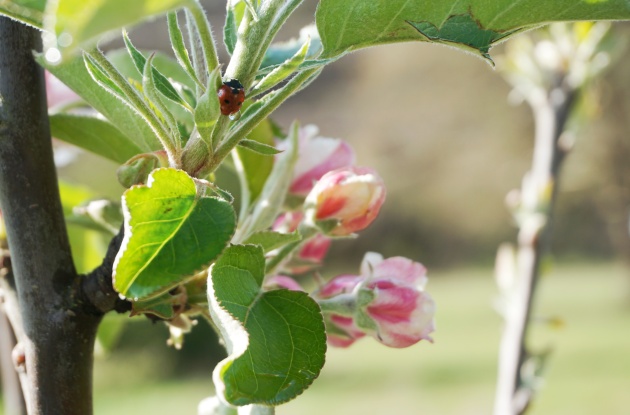We’re back from a longer-than-planned trip to the new place– the last visit, perhaps, that is merely a visit. The anxiety for change is mounting, as is the excitement, as is the stress, as is the sense of accomplishment for all that we managed to do in the past two weeks.
While we finally had the Internet connected after Week One, I couldn’t find more than a single moment to devote to any writing whatsoever, which does leave a vacant place in my heart that I’ll be working to fill in the next few weeks and in the new routine I will be developing.
Albeit a tad late, we planted four apple trees: a Gravenstein (deeply endeared to me in my upbringing in Sonoma County), a Cox’s Orange Pippin, a semi-dwarf Yellow Delicious, and an heirloom English variety of which I cannot recall the name (but I have tagged). We also planted a hardy Chicago fig, two blueberry bushes, rhubarb, and a long row of Russian Fingerling potatoes.
Getting the fruit trees was critical if we were to have any in this year. The soil is wonderfully soft and fairly loose, so digging is a piece of cake compared to the arid, compacted clay of the Valley. We amended the holes with lots of compost and mulched around the slight trunks with plenty of dried field grass. Our toddler enjoyed helping– and “helping.”
Two major threats to our garden and orchard frequent the land: deer, of course, and a notorious neighbor’s herd of ever-roaming cattle. The only solution, it seems, is to fence our entire acreage. In the mean time, though, particularly while we are away, each plant needs its own stronghold. We planned simple circles of field wire around the trees, upheld with a few posts. The wire was too flimsy un-stretched, however, so the construction took far longer than planned. They didn’t come out perfect, but more than satisfactory to me.
Best of all, we have met several neighbors who are more than a wealth of information: they are avid homesteaders and gardeners, active in the community, and as welcoming and generous as I could imagine asking for in new neighbors. For all of this I am boundlessly grateful.












